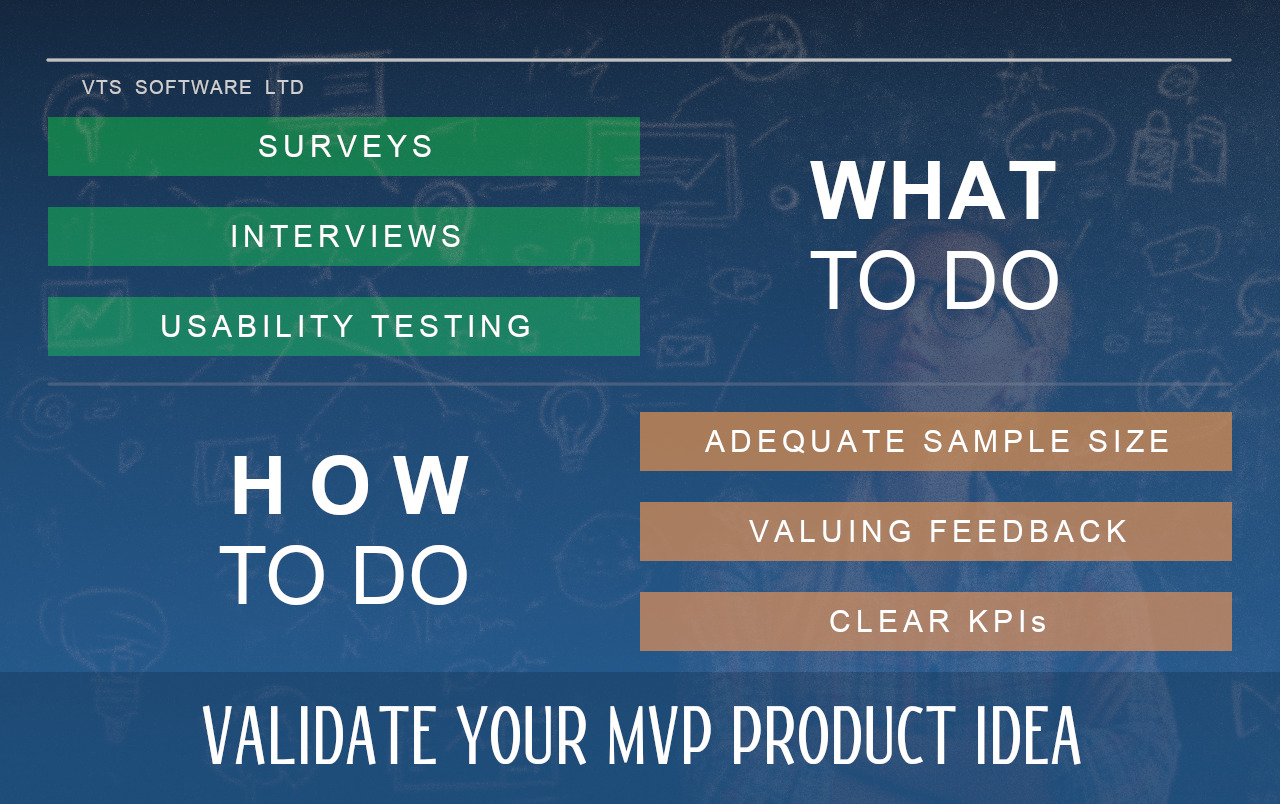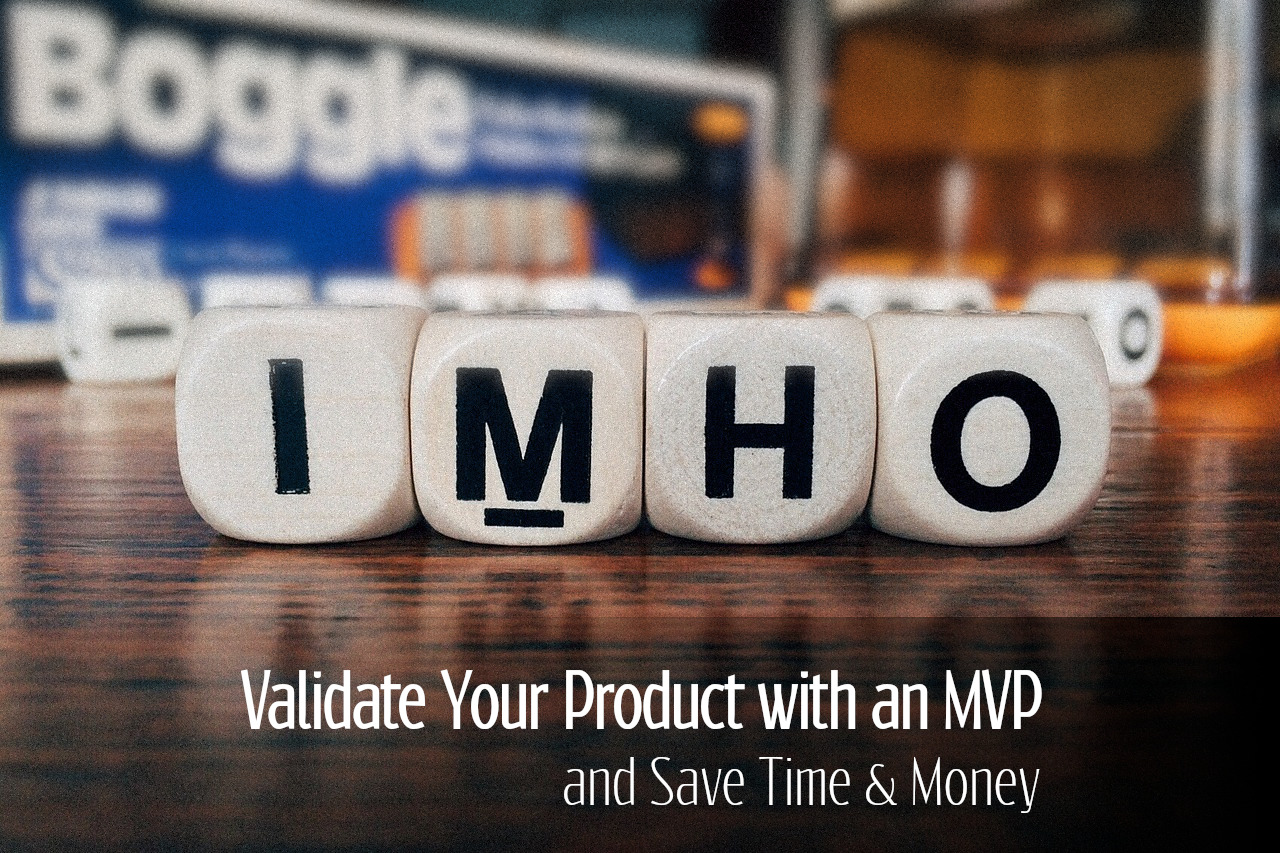Welcome back to the MVP series! In our previous article, Prioritizing Features in MVP: A Lean Approach to Building the Right Product, we talked about how to focus on the essential features that will bring the most value to your product. If you missed that, no worries! Go ahead and give it a read before continuing here; it’s the perfect setup for this article.
Now, in this fifth instalment, we’re diving into a crucial step in the MVP process: validating your assumptions and testing your product idea before diving headfirst into full-scale development. But, we’re not just talking theory—this is where you’ll see how MVP testing can save your business time, money, and unnecessary headaches.
As a software development company with years of experience in bringing MVPs to market, we at VTS Software Ltd know firsthand that validation is the key to making sure your product hits the mark. So, whether you’re a startup or an established company considering a bespoke software solution, this article is your guide to leveraging the power of MVP testing to launch a product that meets your market’s needs. Ready to take the leap? Let’s go!
Don’t Build It Before You Test It!
Here’s a reality check: too many businesses dive headfirst into full-scale development without validating whether their product idea actually solves a real problem. They spend weeks, months, or even years pouring resources into development, only to discover that their audience isn’t interested in what they’re offering. Yikes, right?
Well, that’s where the magic of an MVP (Minimum Viable Product) comes in. By developing a basic version of your product that contains only the core features necessary to test your assumptions, you can quickly determine whether your idea has real potential or if it needs a major pivot. This way, you minimize risk and avoid wasting valuable resources.
Here’s the kicker: MVP development can save you time and money—big time! How? Let’s break it down.
The Power of Assumption Testing
When you have a product idea, it’s easy to fall in love with it. You think, “This is it! This will change the game!” And hey, maybe it will. But before you go all-in, you’ve got to validate your assumptions.
An MVP is the perfect tool for this. It helps you test whether the problem you think you’re solving is really a problem for your target audience. Does your product actually meet their needs, or is it just your solution to a problem they don’t care about?
Let’s say you’re building an app that helps people manage their finances. You believe that budgeting is a pain point for users, so you start planning a whole set of features. But is it really the budgeting aspect that bothers your potential users, or is it the lack of tracking tools? An MVP can help you find out.
With an MVP, you can create a prototype of your app with just the basics—like allowing users to track expenses or set a budget—and launch it to a limited group of people. If the feedback you get tells you that the problem isn’t about budgeting at all, but rather about tracking expenses, you can adjust the MVP to address the real need before sinking too much time and money into building the entire app.
In short, assumption testing with an MVP helps you avoid getting lost in assumptions and ensures you’re heading in the right direction.
The Secret to Customer-Centric Development
It’s time to get real—if you’re not listening to your customers, you’re doing it wrong. And while market research is important, there’s nothing more valuable than direct feedback from actual users.
This is where customer feedback shines. With an MVP, you can get feedback from real users through surveys, interviews, and usability testing. This feedback will give you insights into what works, what doesn’t, and what users are truly looking for. You can then use this information to make informed decisions on whether to move forward with your product, adjust your approach, or even abandon the idea altogether.
Here’s a quick breakdown of how you can gather actionable feedback:
- Surveys: These can be short and simple but give users the chance to share their thoughts. Ask questions like, “What problem were you hoping to solve with this app?” or “How would you feel if this feature was removed?”
- Interviews: Speaking directly with your users allows you to dive deeper into their needs. Get specific about their pain points, what they like about the app, and what they don’t like.
- Usability testing: Watch how users interact with your MVP. Where do they struggle? What seems intuitive to them, and what confuses them?
Customer feedback helps you make decisions based on real-world data, not just gut feelings. It allows you to shape your product into something that customers actually want and are willing to pay for. Plus, it ensures you won’t be wasting precious resources developing features no one will use!
A/B Testing: The MVP’s Power Tool for Validation
Speaking of data-driven decisions, have you ever heard of A/B testing? This is an incredibly effective method for validating your MVP and refining your product offering.
A/B testing allows you to create two versions of your MVP with slight variations (e.g., different features, pricing models, or even design elements) to see which one resonates better with your audience. This could mean testing two different pricing strategies for your app or experimenting with two versions of your homepage. The goal is to figure out which version gets more engagement, conversions, or whatever your KPIs are.
A/B testing gives you the ability to make smarter, data-backed decisions instead of relying on assumptions. You’ll know exactly what your customers prefer and which direction to take your product.
Case Study: Instagram’s MVP Journey—A Real-World Success
Let’s take a moment to look at a real-world example of how A/B testing and customer feedback helped one of the world’s most successful apps, Instagram, shape its MVP into what it is today.
Instagram’s journey began with a very basic photo-sharing app, which, at the time, was the MVP. It didn’t have all the filters, social features, or advanced capabilities that you know and love today. Instead, it was a simple platform for people to upload and share photos—nothing more, nothing less.
When Instagram launched this MVP, it didn’t just sit back and wait. The team immediately began gathering customer feedback and performing A/B testing to understand what worked and what didn’t. Through this feedback, they learned what their users really cared about. Was it the photo filters? The ability to comment on images? The social aspect?
Instead of getting distracted by unnecessary features, Instagram’s team focused on refining what users actually wanted, continually improving the app based on the data they received. This iterative approach allowed them to make smarter decisions, building on what was most important to their audience, not just what the team thought would be cool.
This smart use of A/B testing and direct user feedback helped Instagram evolve from a simple photo-sharing app into a powerhouse. Today, it’s one of the most popular social media apps, with millions of active users around the world.
By refining its MVP based on what real users wanted, Instagram was able to build the right product without wasting valuable time and resources. And the best part? They didn’t dive into building all the flashy features right away; instead, they validated their ideas before investing in the final version of the app.
Your MVP can follow the same path. With the right feedback and A/B testing, you can build a product that truly resonates with your audience and avoid wasting time on features that don’t add value. Just like Instagram, you’ll be able to refine your product based on real-world insights, making it more likely to succeed in the market.
Common Pitfalls to Avoid
As with any process, MVP testing comes with its own set of challenges. But don’t worry! We’ve got your back. Here are a few common pitfalls you should watch out for:
- Sample size too small: Testing with too few users won’t give you enough data to make informed decisions. Make sure you test with a diverse group that represents your target market.
- Ignoring feedback: Don’t make the mistake of thinking you know what’s best. Listen to what your users are telling you and be ready to pivot if needed.
- Lack of clear KPIs: It’s crucial to set clear success metrics (KPIs) before you begin testing. Whether it’s user engagement, feature adoption, or conversion rates, knowing what success looks like will guide your decisions.
By avoiding these pitfalls, you’ll be well on your way to a successful MVP launch.

Test Your Idea Before You Commit
So, now that you’re fully armed with the knowledge of MVP testing, it’s time to take action! Before you dive into full development, make sure you’re testing your assumptions and gathering feedback from real users. This will save you time and money in the long run, allowing you to release a product that’s actually in demand.
At VTS Software Ltd, we’re here to help you with every step of the MVP journey. Whether you’re a small business or an established company, our experienced team specializes in MVP app development, ensuring that your product is both cost-effective and built with real user needs in mind. We become long-term partners in your business, so we’re invested in your success—not just building the project and leaving.
Want to save time, reduce costs, and launch your product faster? It’s easy—go to our contact form and get free consultancy for your business. We’ll guide you through the MVP process, from assumption testing to feedback collection and A/B testing. Let’s build something great together!
In conclusion, MVP testing is the smartest, most cost-effective way to validate your product ideas, collect valuable feedback, and reduce your risk. With the right strategy, you can develop a product that truly meets your market’s needs and get it to market faster—saving time and money along the way.

No Responses